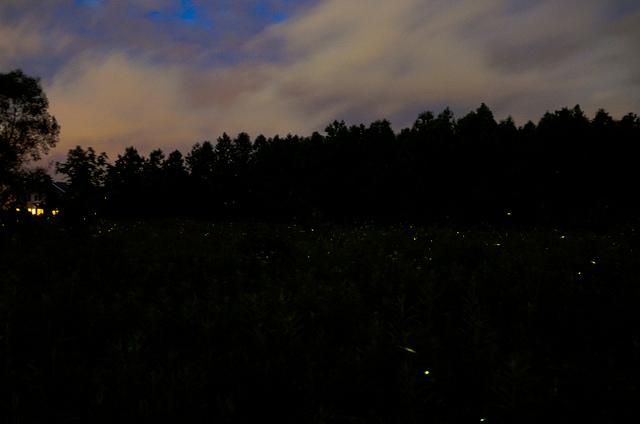
May 10, 2016
For two weeks every spring, thousands of people in the southern Appalachian region make a pilgrimage to the woods to see the mating rituals of a very small beetle with an astounding ability.
Photinus Carolinus is just one of at least 19 species of fireflies that can be found in the Great Smoky Mountians. What makes them special, however, is their remarkable ability to synchronize their flashing abdomens, a phenomenon you may recall from our Emergence episode.
Originally, we had said that this breathtaking event was confined to Southeast Asia and so we were obviously thrilled to find that the United States also boasts a synchronous firefly show. “I took this job around the time the fireflies began to mate last year, and it’s completely unimaginable,” Stephanie Sutton told me over the phone. Sutton is the Chief of Resource Education at the Great Smoky Mountains National Park, home to hundreds of thousands of the small invertebrates. According to Sutton, the best places to see these tiny beasts of wonder is “low to midlevel elevation in rich, alluvial forests.” (Think forests that lie in a floodplain.)
“These beetles hang out in the ground for most of their lives as larva, and only live for 21 days once they mature into adults,” says Sutton. It is during their brief adulthood that the males perform their coordinated fireworks display, as they take to the sky and light up in the hopes of attracting one of the females watching from the ground below. The latest theory according to Becky Nichols, the park's entomologist, is that the females, who will blink twice in a row in response to the males, need a significant amount of light input before they will respond. When the males blink all together, the females will know it's the right species, and will blink back.
Photinus Carolinus was known to scientists as early as the sixties, though not much attention was given to the phenomenon. It wasn't until the 1990s that devoted study of the species began, when a local Knoxville resident happened to mention to Dr. Jonathan Copeland of Georgia Southern University, that she had been watching the annual event for nearly 40 years. Dr. Copeland found this a “big surprise,” according to Sutton and began to study the fireflies in the Great Smoky Mountains. "It's one thing for a bunch of locals to say they see this synchronized flashing, but it's another thing to prove it mathematically," Becky Nichols told me. (If you're interested in the findings of Copeland's study, you can read the original published paper here.)
Today, the park hosts so many visitors that they have to apply to a lottery in order to get a seat at the coveted event. Over 20,000 people applied for this year’s viewing, though only 1,800 passes are granted. “For years the park didn’t actively manage the event,” Sutton told me. “But it became unmanageable and started impacting the resources.” Because the viewing happens at night, guests are required to put red cellophane or red balloons over their flashlights, helping to eliminate light pollution but making it trickier to see where one is walking. “Native plants were being trampled in the dark, not to mention the fireflies that were on the ground.” Now the park hands out red cellophane to visitors and erects barricades to prevent people from wandering off the viewing area.
While nothing can compensate for the real thing, for those of us not living on the alluvial soils of the Appalachian Mountains, there are videos of the lightshow on YouTube. We recommend this one (at 40 seconds in they begin to blink in tandem) and this one, which has more information on Photinus Carolinus and the specific event in the Great Smoky Mountains.
